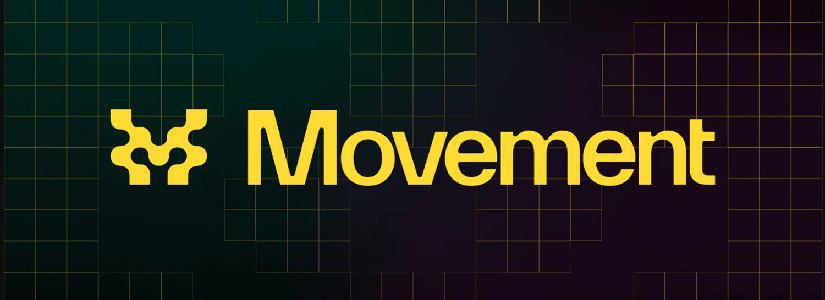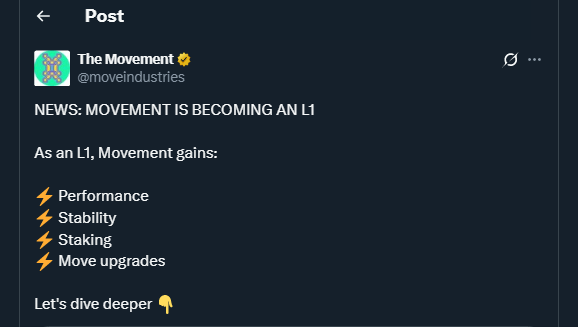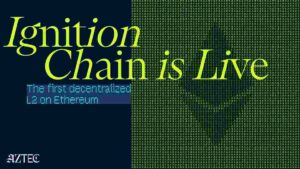TL;DR
- Movement, the blockchain project formerly operating as a sidechain, will transition into a standalone Layer 1 network to boost scalability and enable native staking.
- The move is tied to the release of Move 2.0, an upgrade to its smart contract language that improves functionality for developers.
- Despite past controversies, onchain activity and token performance show signs of resilience, positioning the project for long-term growth and renewed credibility.
Move Industries announced that its Movement project will evolve from a sidechain to a fully independent Layer 1 blockchain. The company said this shift is intended to overcome performance limits and offer new functionalities for both users and developers. According to its roadmap, a testnet will be introduced soon, with mainnet migration planned by late 2025.
The transition is expected to significantly increase throughput. Movement estimates that its new Layer 1 infrastructure will process up to 10,000 transactions per second with near-instant latency, compared with the current 500 to 600 TPS ceiling. This technical leap is designed to attract a broader developer base and strengthen the project’s ecosystem of applications.
Technical Enhancements With Move 2.0
Alongside the transition, Movement will roll out Move 2.0, described by the company as a major step forward for its programming framework. The updated version of the Move language introduces support for enum types, index notation, and compound statements, providing developers with greater flexibility. These features are expected to simplify contract deployment and expand the use cases that can be built on the network.
The Layer 1 design will also incorporate a validator-based staking system. However, the company clarified that tokens locked through other mechanisms will not be eligible for staking. This approach, it said, is intended to maintain security while avoiding unnecessary network distortions.
Rising Adoption And Market Momentum
Recent activity shows growing traction. Movement’s total value locked rose to $200.6 million this month, up from $156.2 million just weeks earlier, according to DefiLlama. Meanwhile, Movement’s decentralized exchange handled $343.6 million in August trading volume, tripling its July performance.

The MOVE token has also held steady in the market, recently trading at around $0.13 with a market capitalization of $349 million. Analysts view the resilience of the token, combined with network growth, as a positive indicator for the project’s future.
Despite controversies earlier this year involving a former co-founder, the company restructured under new leadership and emphasized transparency. With adoption increasing and technical improvements on the horizon, Movement is positioning itself as a stronger, more autonomous Layer 1 player in the blockchain landscape.











